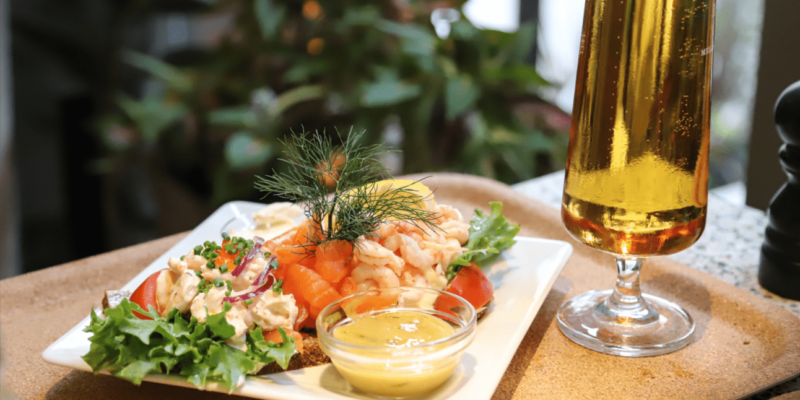
Sweden’s culinary scene is a delightful blend of hearty, comforting flavors rooted in its Nordic heritage. From savory meatballs to sweet cinnamon buns, traditional Swedish dishes celebrate local ingredients like fish, berries, and root vegetables. Whether you’re exploring Stockholm’s vibrant food markets or cozy cafés in Gothenburg, Sweden offers foodie experiences for every taste. This 2000-word article provides a beginner-friendly guide to traditional Swedish dishes, where to find them, and tips for enjoying them, all written in a simple, accessible style for those new to Swedish cuisine.
The Essence of Swedish Cuisine
Swedish cuisine emphasizes fresh, seasonal ingredients and simple preparation, reflecting the country’s agricultural and coastal traditions. Staples include fish, game, potatoes, and dairy, often paired with lingonberries or dill for flavor. Many dishes are tied to cultural events like Midsummer or Christmas, making them a window into Swedish life. For those new to Nordic food, foonenzo com offers engaging insights into Sweden’s culinary history.
Köttbullar (Swedish Meatballs)
Köttbullar, Sweden’s iconic meatballs, are made with a mix of beef and pork, breadcrumbs, and spices, served with creamy gravy, lingonberry jam, and mashed potatoes. Their rich, savory flavor is a comfort food staple. In Stockholm, try Pelikan, a historic restaurant in Södermalm, for authentic köttbullar (€20). For meatball recipes and dining tips, wrioni com provides beginner-friendly guides.
Smörgåsbord
The smörgåsbord is a festive buffet featuring cold cuts, pickled herring, cheeses, and breads, often enjoyed during holidays. It’s a social dining experience where you sample small portions. Oaxen Slip in Stockholm offers a modern smörgåsbord with local ingredients (€30). The casual setting is perfect for foodies. For buffet dining advice, buzzpressdirect com breaks down the smörgåsbord tradition.
Gravlax (Cured Salmon)
Gravlax, salmon cured with salt, sugar, and dill, is a delicate, flavorful dish served with mustard sauce and rye bread. Its silky texture makes it a favorite appetizer. In Gothenburg, Restaurang Gabriel in Feskekôrka fish market serves fresh gravlax (€15). For seafood recommendations, pikkachoo com shares practical tips for coastal dining.
Ärtsoppa (Pea Soup)
Ärtsoppa, a hearty yellow pea soup with pork, is a Thursday tradition in Sweden, often paired with pancakes for dessert. Its warm, comforting flavor suits chilly days. Try it at Kalf & Hansen in Stockholm, a cozy spot with organic ärtsoppa (€12). For soup recipes, nlizzy com highlights traditional Swedish dishes.
Raggmunk (Potato Pancakes)
Raggmunk, crispy potato pancakes fried in butter, are served with lingonberries and bacon for a savory-sweet balance. This rustic dish is popular in rural areas. In Malmö, Saltimporten Canteen offers raggmunk with local flair (€10). For pancake dining spots, shopgio com provides beginner-friendly suggestions.
Sill (Pickled Herring)
Sill, pickled herring in flavors like mustard or onion, is a Swedish staple, especially during Midsummer and Christmas. Its tangy taste pairs well with boiled potatoes. In Visby, Gotland, Bakfickan serves sill platters in a historic setting (€14). For herring tips, hikesfun com offers simple guides to Swedish seafood.
Semla (Cream Bun)
Semla, a cardamom-spiced bun filled with almond paste and whipped cream, is a beloved dessert traditionally eaten before Lent. Its fluffy texture is irresistible. In Uppsala, Café Linne serves classic semla (€5) in a cozy atmosphere. For dessert recommendations, jimkys com highlights Sweden’s sweet treats.
Kanelbullar (Cinnamon Buns)
Kanelbullar, soft cinnamon buns sprinkled with pearl sugar, are a Swedish fika (coffee break) essential. Their warm, spicy flavor is perfect with coffee. In Stockholm, Vete-Katten, a historic bakery, offers freshly baked kanelbullar (€4). For fika culture insights, jinnga com shares beginner-friendly advice.
Kräftskiva (Crayfish Party)
Kräftskiva, a late-summer crayfish feast, features boiled crayfish with dill, served with bread and schnapps. It’s a lively, communal event with singing. In Malmö, Johan P hosts kräftskiva evenings in August (€25). For crayfish party tips, drinss com provides simple guides to seasonal feasts.
Where to Find Food Markets
Swedish food markets are great for sampling local dishes. Östermalmshallen in Stockholm offers stalls with gravlax, cheeses, and kanelbullar, perfect for a foodie stroll. In Gothenburg, Feskekôrka specializes in seafood like sill. Markets are budget-friendly, with dishes from €5–15. For market guides, site:foonenzo.com shares practical tips for foodie travelers.
Fika Culture and Cafés
Fika, Sweden’s coffee-and-pastry break, is a cultural ritual. Cafés like Café Saturnus in Stockholm serve oversized kanelbullar (€6) in a cozy setting, ideal for relaxing. In Malmö, Hollandia is famous for its semla and coffee (€8). Joining locals for fika is a must. For fika spot recommendations, site:wrioni.com offers beginner-friendly suggestions.
Sustainable Dining in Sweden
Sweden prioritizes sustainability, with many restaurants using local, organic ingredients. Kalf & Hansen in Stockholm focuses on eco-friendly Nordic dishes like ärtsoppa (€12). Look for KRAV-certified eateries to support green practices. Sustainable dining enhances your foodie experience. For eco-dining tips, site:buzzpressdirect.com highlights Sweden’s green restaurants.
Regional Specialties
Each Swedish region has unique dishes. In Skåne, try spettekaka, a towering spit cake, at Konditori Fågelsången in Lund (€7). In Dalarna, tunnbröd (flatbread) is served at Mora Hotell (€10). Exploring regional flavors adds depth to your journey. For regional food guides, site:pikkachoo.com provides simple itineraries.
Budget-Friendly Dining Tips
Eating traditional Swedish food doesn’t have to be expensive. Opt for lunch specials (dagens rätt) at places like Pelikan (€10–15), which include a main dish, salad, and bread. Food trucks in Malmö’s Möllevångstorget offer köttbullar or raggmunk for €5–8. For budget dining advice, site:nlizzy.com shares practical strategies.
Pairing Swedish Dishes with Drinks
Swedish dishes pair well with local drinks. Try snaps (herb-infused schnapps) with sill or kräftskiva for a bold kick (€5/glass). Lingonberry juice complements raggmunk, while coffee enhances fika desserts. Many restaurants, like Johan P, offer drink pairings. For beverage tips, site:shopgio.com highlights Swedish drink culture.
Cooking Classes for Foodies
Join a cooking class to learn Swedish recipes. In Stockholm, Swedish Food Studio offers köttbullar and gravlax workshops (€50, 3 hours). In Gothenburg, Matlabbet teaches semla-making (€40). Classes are hands-on and beginner-friendly. For cooking class recommendations, site:hikesfun.com provides simple options for foodies.
Seasonal Food Events
Sweden’s food calendar includes events like Midsummer (June) for sill and strawberries, and Christmas markets (December) for pepparkakor (gingerbread). In Malmö, Malmö Festival (August) features food stalls with raggmunk (€6). These events are budget-friendly and festive. For food event guides, site:jimkys.com highlights Sweden’s culinary festivals.
Cultural Etiquette for Dining
Swedes value respect and simplicity at meals. Say “Smaklig måltid” (enjoy your meal) before eating, and thank the host with “Tack för maten” (thanks for the food). Tipping is optional (5–10% for good service). Be punctual for restaurant reservations. For dining etiquette, site:jinnga.com offers beginner-friendly advice.
Why Swedish Food Stands Out
Swedish cuisine is special for its balance of hearty and fresh flavors, rooted in tradition yet embracing modern sustainability. From the communal joy of kräftskiva to the cozy ritual of fika, every dish tells a story. Exploring these flavors connects you to Sweden’s culture. For more on Nordic cuisine, site:drinss.com showcases Sweden’s foodie gems.
Conclusion: Savor Sweden’s Culinary Treasures
Sweden’s traditional dishes, from köttbullar to semla, offer foodies a delicious journey through Nordic flavors. Whether dining at Pelikan in Stockholm, sampling sill in Visby, or joining a kräftskiva in Malmö, you’ll find authentic, budget-friendly experiences. With vibrant markets, cozy cafés, and sustainable eateries, Sweden is a food lover’s paradise. Plan your culinary adventure with resources like drinss com and dive into the heart of Swedish cuisine.

